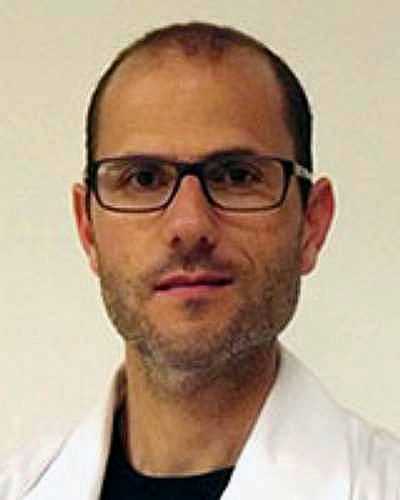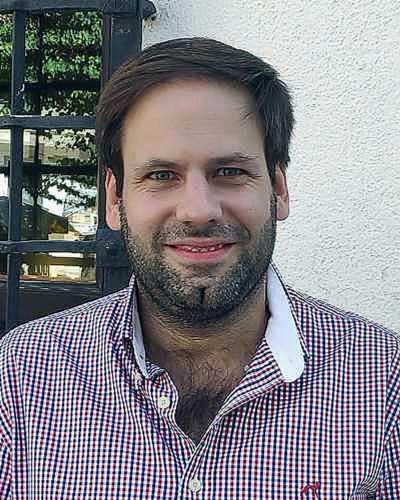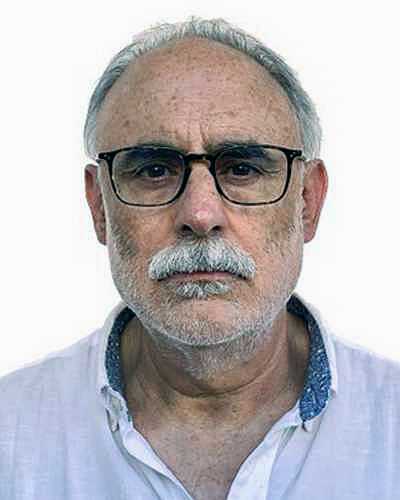Introduction
According to recent UN data, over half the world’s population has access to the internet1. This percentage has increased with time despite difficulties persisting in some sectors of society, for example the primary digital divide, associated with limitations to access to new technologies or economic barriers; and the secondary digital divide, which relates to difficulties with achieving skills because of low schooling levels or not recognizing the accumulated benefits that their use can offer2-5. According to 2015 Eurobarometer data, 70% of people in Spain used mobile phones with internet access in 2014. However, the growth of new information and communication technologies (ICT) has stagnated with only a 10% increase compared to the previous decade6. The Spanish National Statistics Institute indicates that 90.7% of the population in Spain aged 16–74 years used the internet in 2019, which was 4.6% more than in 20187.
Patients’ use of online health information to enquire about health matters before or after medical consultations has also increased. This has led to demand overhang given the vast quantity of available information8. However, users do not possess suitable skills to distinguish between fake news and fact, which could lead to poor doctor–patient relationships9. Similar limitations may arise for professionals although they have generally moved toward the digital age with new care and treatment plans based on patient participation10.
Some social determinants associated with this activity are well known. For instance, patients with a high level of education are more likely to seek health information from the internet on quality websites. Young people have become more regular users of ICT, but internet use by the elderly has only slightly increased11. Women tend to seek out information on health matters for themselves, particularly in relation to pregnancy12, food and exercise, but also seek health information for their relatives13-15. Patients with few financial resources tend to seek internet information on health matters less frequently13, which may be determined by the disease they have. Some literature reports that ill patients who are uncertain about a diagnosis and treatment more frequently use the internet to find alternative therapies and/or views from other users, how they have to face their disease and the possibility of relapse16. In the vast majority of cases, the idea is that patients do not trust online health information very much17,18.
Most studies on internet use have been conducted in urban populations, and the internet usage of rural primary care patients is unknown.
The hypothesis for the present study states that using the internet to seek information about health matters is widespread in the rural population. The authors expect it to be frequently used by young people and patients with chronic diseases.
For this reason, the present study aims to learn how frequently rural primary care patients seek health information on the internet and the factors associated with this practice.
Methods
A cross-sectional study was conducted after inviting patients aged over 15 years from the towns of Motilla del Palancar and Iniesta in Cuenca, Spain, who consulted primary care from February to June and from July to September 2019, respectively. According to the population density of both towns, the estimated sample size was 385 patients from each town for an expected 50% prevalence, a 95% confidence interval (CI) and 5% precision. Consecutive case sampling was done in accordance with the time available between consultations.
The inclusion criteria were specified in relation to patients’ age (>15 years) and consultation time (8 am to 3 pm, Monday to Friday, in the months when data were collected at the respective health centers). Illiterate patients and/or those who did not speak Spanish were excluded. The patients previously received an informed consent document. No patient refused to participate in this study.
A specially designed self-administered questionnaire with 15 questions was used. It included sociodemographic aspects such as age, gender, civil status and level of education according to the National Education Classification (2014) (CNED-2014). Socioeconomic level was estimated according to the profession of the main financial provider (the patient or their relative) using the classification of occupational social class proposed by Domingo-Salvany et al19. Open questions were about having a chronic disease background and the reason for attending consultations. Patients were asked if they sought information on the internet, what devices and search engines they used, at what time point they sought information about consultations with health personnel, if they used the internet to seek information relevant to a relative’s health, and the reason for employing different websites and their reliability.
The collected data were coded and included in a computer data file using the SPSS v25 statistical package (IBM; http://www.spss.com). The statistical analysis included the description of the variables. The following were applied: a bivariate analysis by the χ2 to compare the qualitative variables, the student’s t-test for the quantitative variables with normal distribution and a non-parametric test if they did not follow normal distribution (Kolmogorov–Smirnov test). To control for any confounding factors and possible interactions among the variables showing a statistically significant association in the bivariate analysis, a multivariate analysis was carried out by logistic regression. Statistically significant differences were taken as p<0.05.
Ethics approval
Data processing was completely anonymous. Patients were informed about the objectives and the study procedure, and they signed informed consent. This study was approved by the Drug Research Ethics Committee of the Integrated Care Management of Albacete, Spain (2018/12/138).
Results
Seeking health information on the internet
A total of 850 valid questionnaires were obtained. No-one refused to participate in the study. The patients’ median age was 54 years with an interquartile range (IR) of 39–67. Of all the patients, 60.9% were female. Moreover, 49.8% (95%CI 46.3–53.2%) indicated that they sought health information on the internet – 53% (95%CI 47.9–57.9%) in Motilla del Palancar and 46.9% (95%CI 42.9–51.6%) in Iniesta. No significant differences were found between both populations (p=0.075).
Statistically significant differences (p<0.0001) were found for information-seeking on the internet for attendance, gender, age and level of education (Table 1). The median numbers of visits to nursing staff and the doctors by patients who sought information on the internet were two nursing consultations and eight doctor visits each year, respectively. For those who did not seek this information online, median numbers of annual visits were six nursing and nine doctor consultations each year. The median age of the patients who sought information was significantly lower than that of those who did not. Women more frequently searched the internet: 55.2% (95%CI 50.8–59.6%) compared to 41.3% (95%CI 35.8–46.7%) for males. A total of 75.4% of those who had completed secondary education and 86.4% of those with university education sought health information on the internet. Information-seeking also significantly increased (p=0.001) with more qualified occupations.
Of the patients who sought information on the internet, 78.0% across both towns (95%CI 74.0–82.1%) reported that they did so for their relatives and friends, with 80.2% in Motilla del Palancar and 75.8% in Iniesta. No statistically significant differences between towns was found.
Table 1: Sociodemographic characteristics of study participants and the relationship to seeking health information online†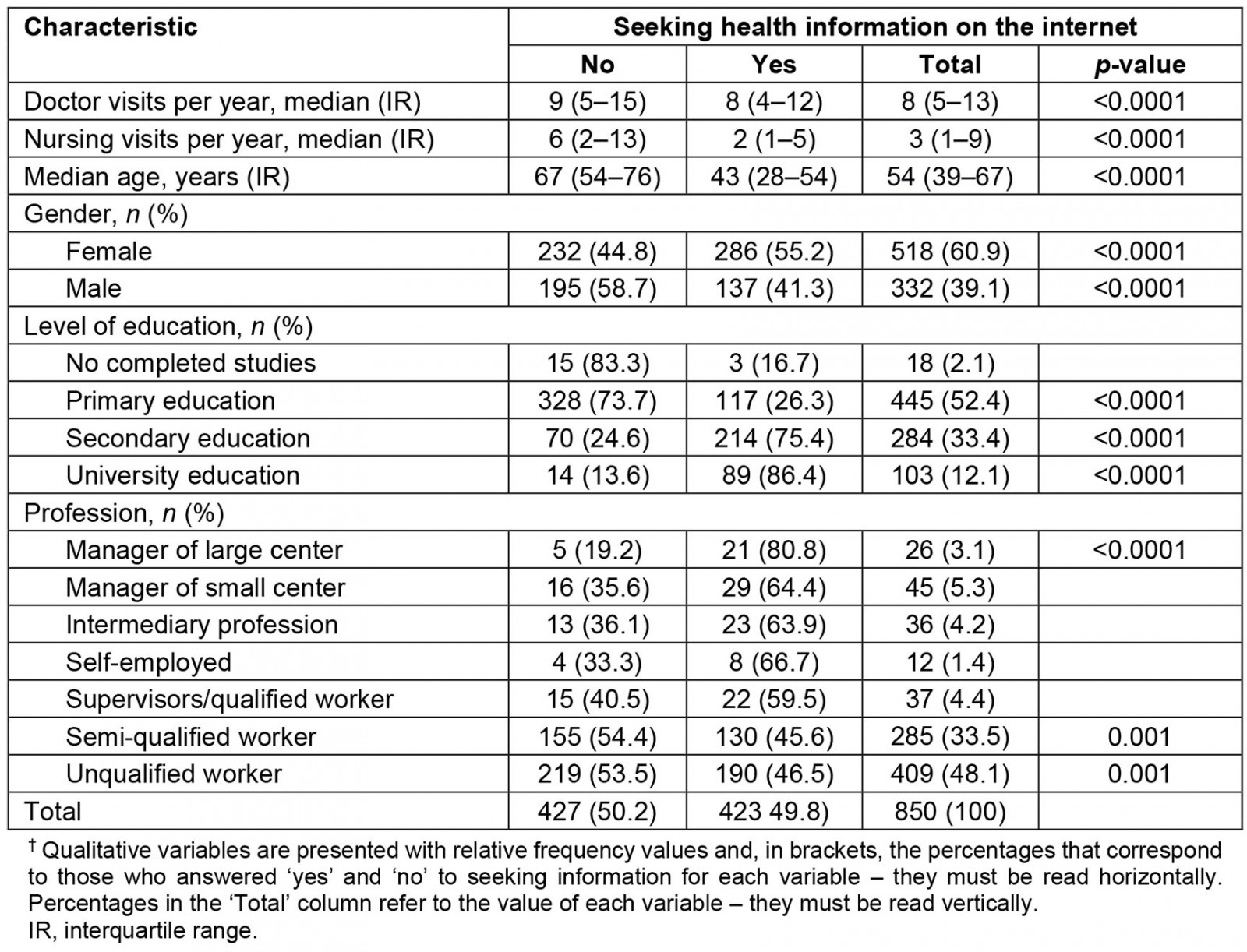
Reasons for attending primary care consultations, and chronic disease background
Table 2 shows the distribution of the patients who searched the internet for information on health issues according to their reason for attending consultations on the day they participated in the study.
The most frequent reason (28.6%; 95%CI 25.5–31.7%) for consultation was general and non-specific problems. No statistically significant differences were found between the patients who sought health information and those who did not in relation to their reasons for attending consultations.
Frequency of seeking health information on the internet was significantly higher (p<0.05) for those who did not have a chronic disease, and 67.5% did this (95%CI 61.7–72.9%). The disease background that was most frequently associated with seeking health information on the internet was related to cardiovascular risk (Table 3).
Table 2: Reasons for consultations and internet health information-seeking†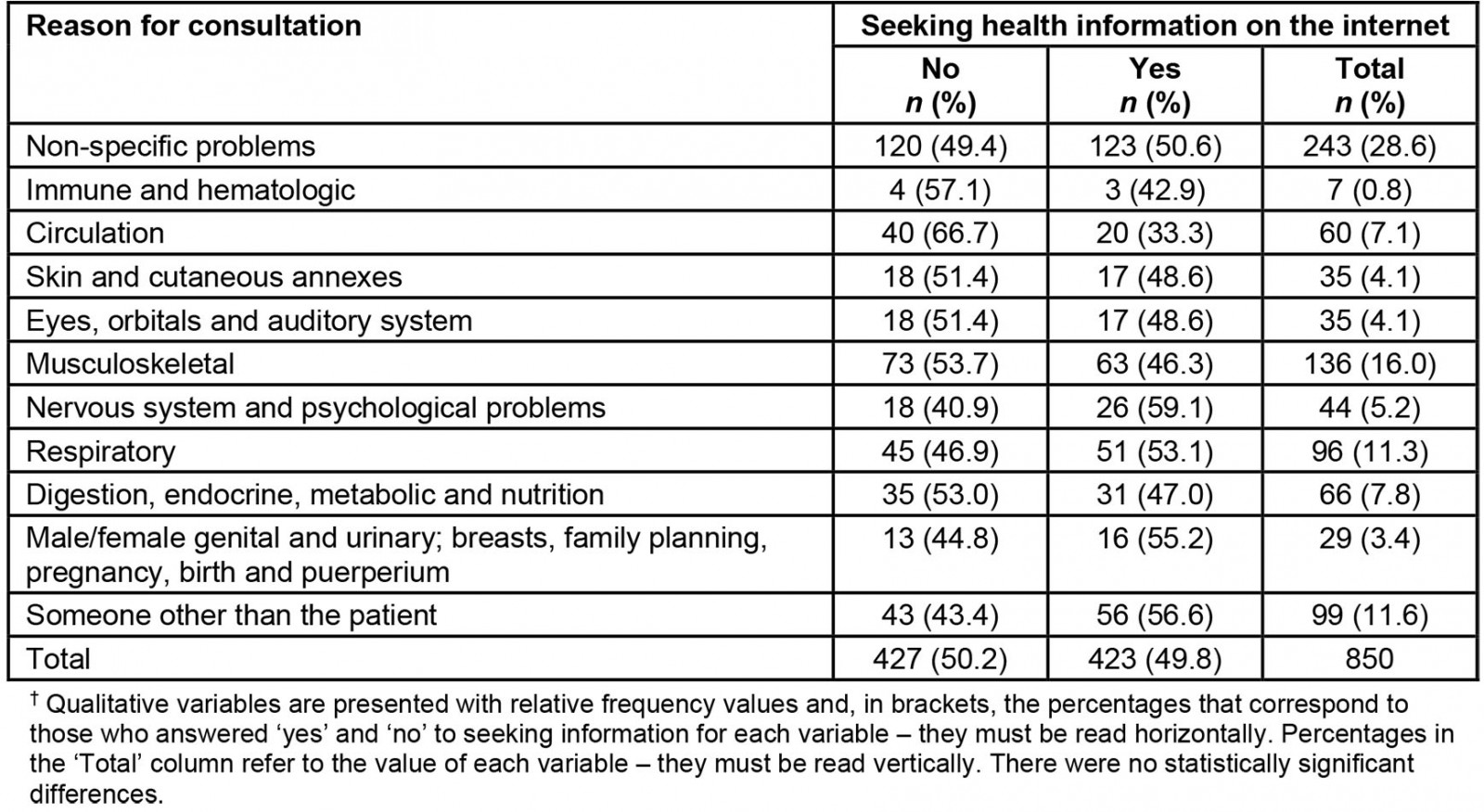
Table 3: Health information-seeking on the internet according to chronic disease background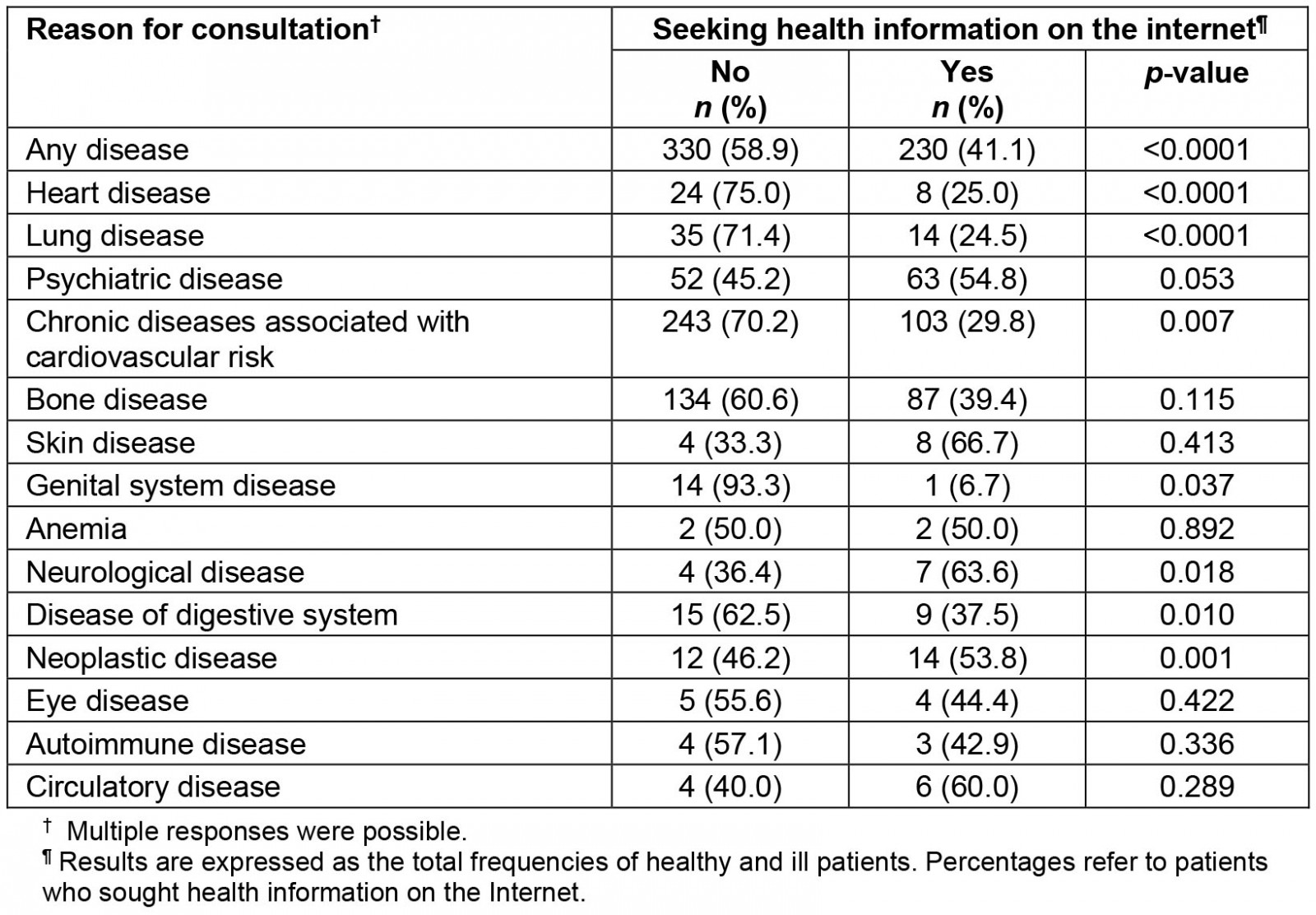
Variables independently associated with information-seeking: multivariate analysis
Table 4 indicates the logistic regression analysis results and shows an independent relationship with health information-seeking on the internet for the variables of gender, age, level of education and having a chronic disease background.
An interaction was apparent between age and having a chronic disease background. It indicated that the likelihood of seeking information on the internet was lower for being older and having a chronic disease background. When this was taken into account, the odds ratio considered separately for having a chronic disease background increased, and in such a way that it made information seeking more likely.
Figure 1 shows the different frequencies for information-seeking for different age groups and having a chronic disease background. It shows that the vast majority of older patients with a chronic disease background did not trust online health information very much.
Table 4: Logistic regression analysis of patient data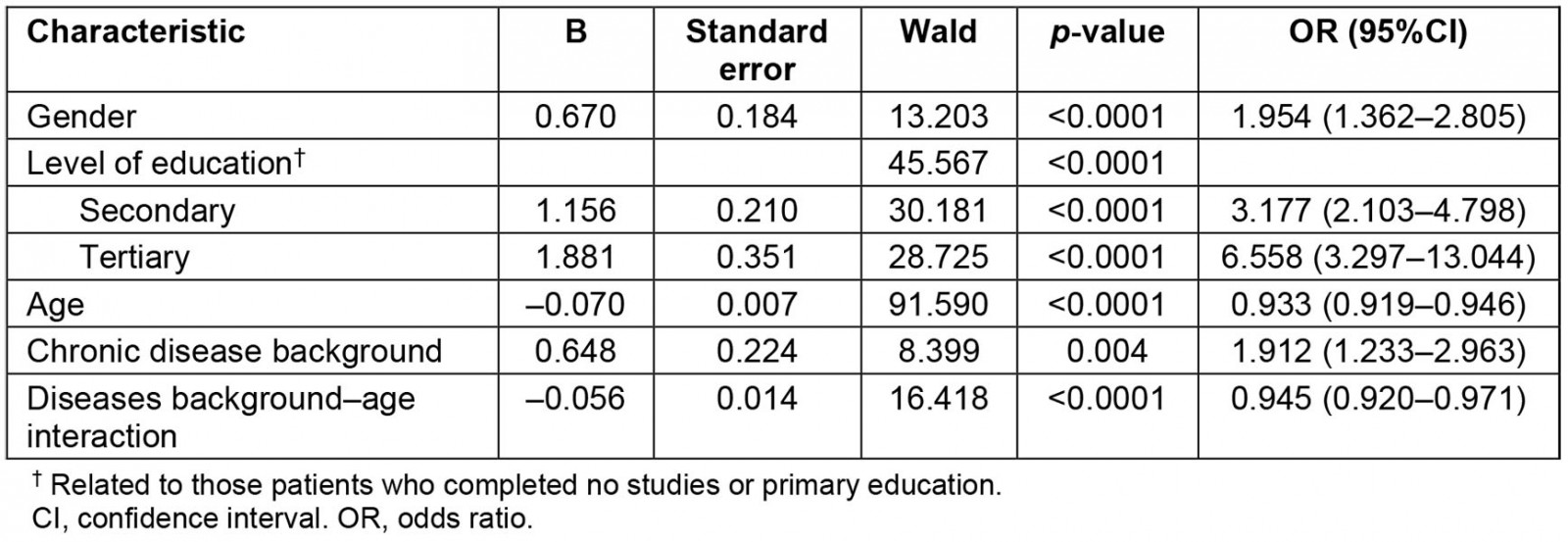
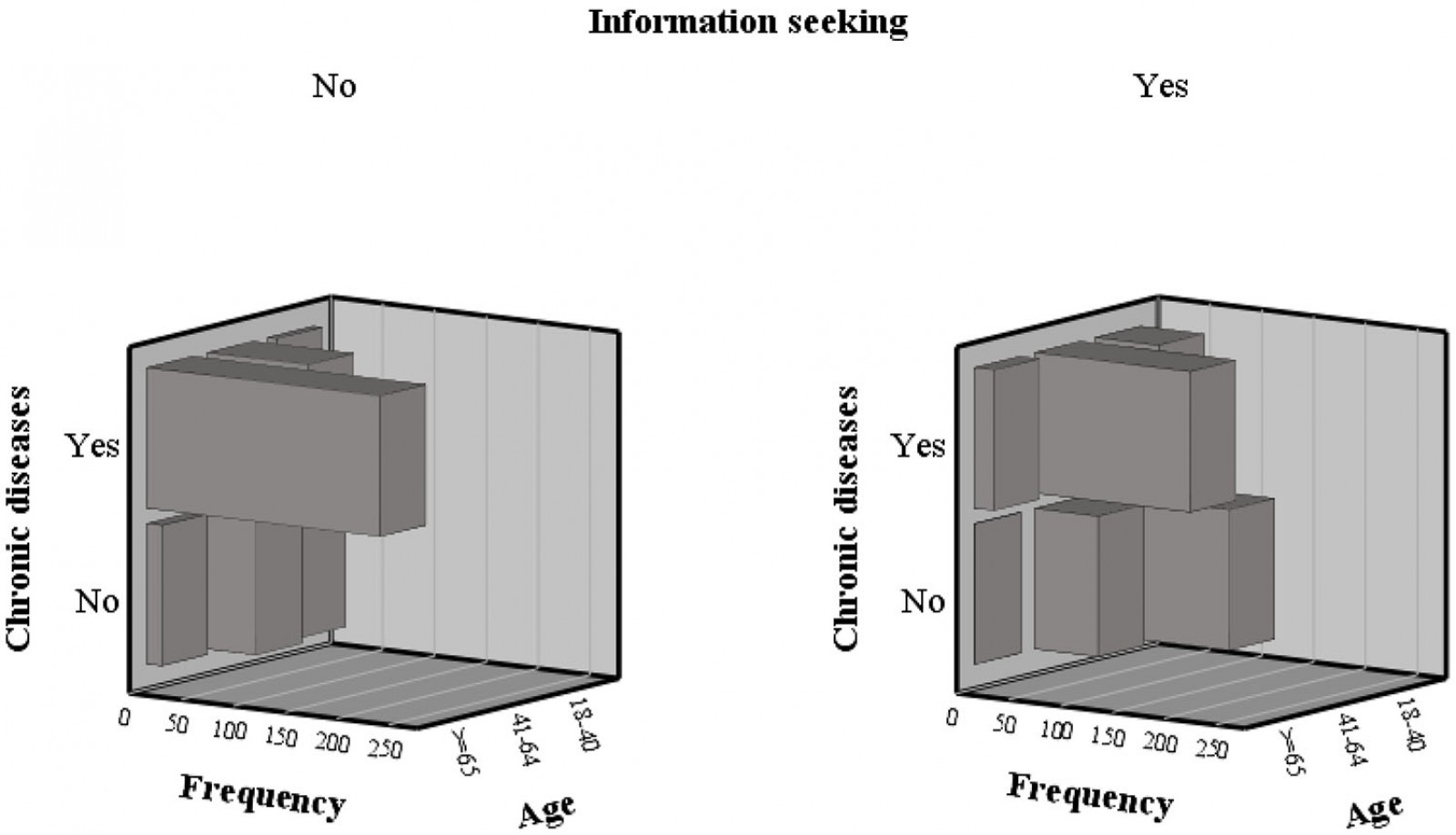 Figure 1: Information-seeking frequency according to age and having a chronic disease background.
Figure 1: Information-seeking frequency according to age and having a chronic disease background.
Discussion
Just under half of patients sought health information for themselves and/or relatives on the internet. Women, young people and those who had completed secondary and higher education more frequently sought health information on the internet. An interaction was found between age and having a chronic disease background – being older with a diseases background determined a lesser likelihood of seeking health information online. When this was taken into account, having a diseases background independently predisposed to seek information online; that is, having a chronic diseases background predisposed to seeking health information, except for older patients.
Patients used the internet to be informed about their health and their relatives’ health. This finding is similar to what other studies report20, and women use the internet more frequently than men21. The digital divide is currently narrower, which allows patients to participate in their own health and disease process22. The present study found that 49.8% of patients use the internet to seek information on health matters, which confirms the extensive use of online information23. This might influence how they communicate, how they cope with health problems, and how patients satisfy their curiosity, as similar studies have observed24. More young patients used the internet for searches, but so did quite a large number of older patients25. In any case, the present study results revealed that the older the patients were, the less interest they showed in the internet, which coincides with findings of other authors26. In terms of occupation, the patients who occupied higher job posts more frequently did internet searches about their health; for example, 80.8% managers or directors searched online, as opposed to 46.5% of unqualified workers. Similar results were found for level of education – a high percentage of people who went to university used the internet. Therefore, the present study’s results agree with these two aspects and with other studies27.
The most frequent reasons for patients attending consultations were unspecified tasks such as administrative activities (eg reports for sick leave or financial assistance). In line with this reason, one of the benefits of growing internet use is that such tasks could be performed online. Both doctors and patients used their time during consultations to inquire about health-promoting activities, such as exercise and a healthy diet28. Other frequent reasons for attendance were locomotor and breathing problems – findings that agree with other studies29. The patients with a chronic disease background who frequently used the internet were most likely to have cardiovascular diseases, followed by bone problems and psychiatric diseases, which also coincides with the findings of other studies30. Studies have shown that the internet can not only have a beneficial use, but can also support correctly and remotely monitoring such diseases31,32.
For health matters, the internet can be a beneficial tool for patients and healthcare personnel. It would be interesting to make the most of these tools being available to reach people who live in situations of exclusion due to the primary or secondary digital divide33-35.
Conclusion
The patients in this study from the primary care centers in both towns, especially females, used the internet as a source of information about health matters for themselves and their relatives. This type of online information is used more frequently by younger people, people with a higher level of education and those with a diseases background.
Special attention should be paid to the 50% of the population who are not seeking health information online.
Acknowledgements
We sincerely thank all those patients who voluntarily participated in this study.


